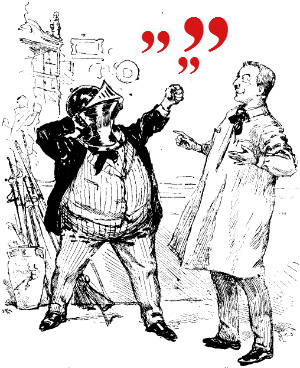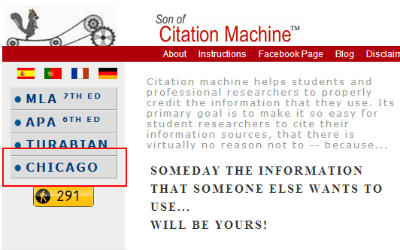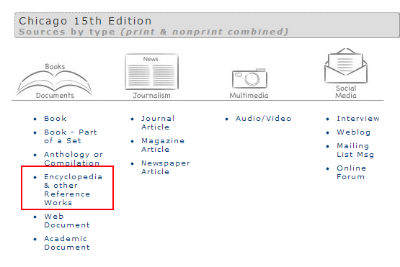You may think you left citations behind when you finished writing college papers, but if you are writing non-fiction these little footprints of authority are more important than ever. In school, your references to others’ work is a matter of intellectual honesty and under Fair Use of the Copyright Act, attribution of the source is sufficient. When you are writing a book that will be published and sold, your work no longer falls under this clause since the purpose is for profit. The responsibility for proper citations and copyright permissions rests entirely upon the author.
When do you need to use a citation when writing non-fiction?
-
When you are using a direct quote
-
When you are paraphrasing someone else’s idea or analysis
-
When you are using data, statistics, or any other quantifiable ‘fact’ that can challenged or called into question
-
When you want to strengthen a point or argument, and there is a more qualified figure who also speaks to that fact
-
If you want to give readers more information that doesn’t fit into the flow of your writing (although that can also fall more under the purview of a note)

There are many ways to deal with citing your sources depending on how you are writing your manuscript and what you are writing about. This isn’t academic writing – those messy MLA and APA parenthetical in-text citations probably won’t make an appearance in your book. Chances are, you will use footnotes or endnotes to house your conceptual credentials.
The Rigid Standards of Citations
Much to the chagrin of creative types the set of rules governing many types of citations are inflexible. They cover order, capitalization, and even formatting like italics and punctuation. Modern Language Association (MLA), American Psychological Association (APA), Turabian, and The Chicago Manual of Style are the most common styles used in publishing. You will probably be formatting the book manuscript with your citations in the format of the Chicago Manual of Style, which is the go-to for most types of book publishing.
For example, if I used this quote from a book I accessed online –
“Hair dyes were popular in Ancient Rome, and historians have discovered more than 100 different recipes that the Romans used for bleaching or dying hair”
The endnote citation in the CMS format looks like this:
Sherrow, Victoria, ed. Encyclopedia of Hair: a Cultural History. Greenwood Publishing Group, 206. s.v. “Hair Colorants.” books.google.com/books?isbn=0313331456 (accessed May 25, 2013).
But I’ll let you in on a little secret – this took me no memorization, no know-how, and no time at all.
Using Citation Machine for Painless Citations
Citation Machine is a free service that helps writers give credit where credit is due, and does away with writing with the Chicago Manual of Style by your side. By simply plugging in my pertinent information, I am able to generate a flawless citation.
Start by choosing the citation style you wish to follow.

Determine the type of resource you are citing. Citation Machine covers even the most modern sources, although not a style guides are up to speed. (MLA has a format for Twitter, for example!)

Complete the form with the bibliographical information of your source.

Highlight the proper generated citation and save it!

Your endnotes shouldn’t be a painful task. Don’t wait until you are finished writing and putting your bibliography and endnotes together. Use the technology at your disposal to source your information as you research. Much easier to gather the citation information when you find it, than try to locate it again later.
The beauty of Citation Machine becomes self-evident when you need to reformat your citations from one style format to another. Let the machine do it for you. When you make reference to the source in the body of the text, Citation Machine provides an ‘In-Text Citation to highlight and copy’ to paste into your document. When you are ready to put your bibliography together, Citation Machine creates a ‘highlight and copy’ citation for you to use.
Citation Machine does NOT save your work. Make sure to create a file for your citations. You put your citation information data into the machine, and it comes out for you to cut and paste into your files. It’s a great rachet wrench in your author’s toolkit.

Dear Claire, Thank you for posting this, very helpful! I’m writing this book, though I have not been professionally trained. But, I am insistent on citing whatever or whomever as to where / from whom I obtain useful information. Thanks again!
Fair Winds & Following Seas,
Joseph C. Land
Thanks Joseph C. Land for stopping by our blog. CitationMachine.net is one of several tools now available to writers for keeping track of references and for converting them from one style to another (from Chicago to MLA to APA). It is no longer a free tool but extremely affordable. $10/month or $29/year or $30 for a lifetime subscription. For the hours it saves you, it’s a bargain. There are other similar sites which are free which many students and scholars use. Glad you found this information helpful.
Hello Clare,
I have a bachelor’s degree and a master’s degree in psychology, and I have begun a manuscript for a book that is an autobiography and a psychological assessment of a behavior. The manuscript is partly based on psychological research of the behavior, so there are many parenthetical in-text citations because I was trained to use the American Psychological Association’s ( APA) format.
In this case, would I continue to format the manuscript with the APA format, or would I change the format to the standard format for most books: Chicago Manual Style?
Thanks for your response.
Hi Mary Ann. Thanks for your question. If your book manuscript is written for an academic publisher of psychology texts, you would likely follow APA. Publishers state their style guidelines for manuscripts on their websites along with their submission guidelines. If you are writing for a more general audience you will likely not use in-text citations or footnotes. What confuses me in your question is the kind of book you are writing. Is their some genre confusion here? An autobiography is a first-person account of one’s lifestory. A psychological assessment of a behavior sounds more like nonfiction written in third-person. Who is the book written for? Writing may be for the writer, but publishing is for the public. A book written for those who do psychological assessments is not the same kind of book written for those who may exhibit a certain behavior and seek self-help. I think the citations may be the least of your concerns.